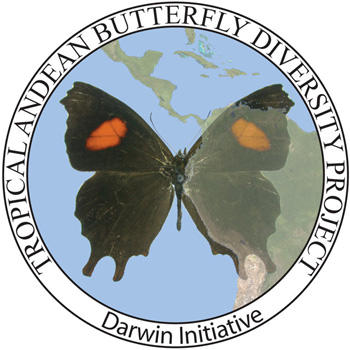The newer understanding we have reached about the genomic nature of species and hybridization is leading to a re-examination of what we mean by the term "species." For instance, the argument that species are "reproductively isolated" seems to lose its power when over 40% of the genome has undergone admixture between the sympatric pair Heliconius cydno and Heliconius melpomene.
This work, and my group's earlier work on hybrid zones and host races has triggered a strong interest in species concepts and taxonomy. I have written a number of reviews on speciation, species, and species concepts. In addition, I have supported initiatives to make more widely available taxonomic information, particularly taxonomic databases of species. This is loosely gathered under the Taxome Project, funded in part via a Darwin Initiative grant (Tropical Andes Butterfly Diversity Project, TABDP - most of the work was carried out by Blanca Huertas and Keith Willmott), and a small grant from GBIF. As a result of this and other support, we have generated online databases of the distribution of neotropical butterflies, especially that of the Heliconiini. An important product is a digitized synonymic list by Gerardo Lamas of all the butterflies of America, and, in preparation, of the butterflies the world. TABDP also digitized Gerardo's photographs of type specimens of Neotropical butterflies from museums around the world. This list and the photographs have recently been parsed into part of the Butterflies of America project by Nick Grishin.
As well as Heliconius and other butterflies, my group has also done some work with host races of phytophagous insects, particularly the moth Zeiraphera diniana. See:
Emelianov, I., Mallet, J. & Baltensweiler, W. (1995)
Emelianov, I., Drès, M., Baltensweiler, W. & Mallet, J. (2001)
Emelianov, I., Simpson, F., Narang, P., & Mallet, J. (2003)
Emelianov, I., Marec, F. & Mallet, J. (2004)
Even earlier (1989-1992), we studied the ecology, distribution, and insecticide resistance of some newly discovered sibling species of Anopheles mosquitoes in Mississippi. Much of that work remained unpublished, or is in "grey" litererature like reports, newsletters, etc. In the late 1990s I made the results available online. See: https://www.ucl.ac.uk/taxome/jim/anoph/anoph.html
North American Anopheles and the work with host races of plant feeding insects all combined to crystallize J.M.'s view of species as "genotypic clusters."
